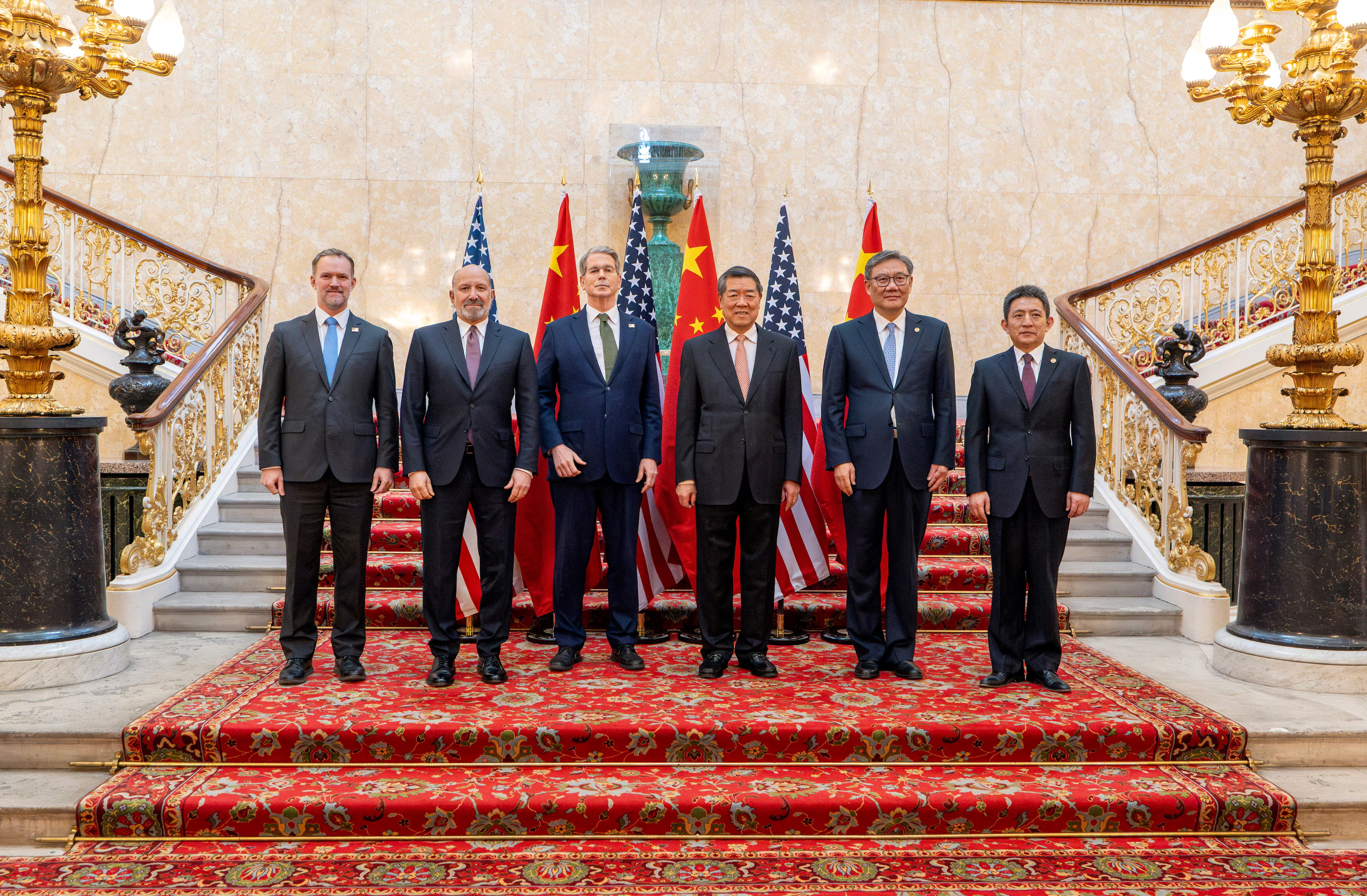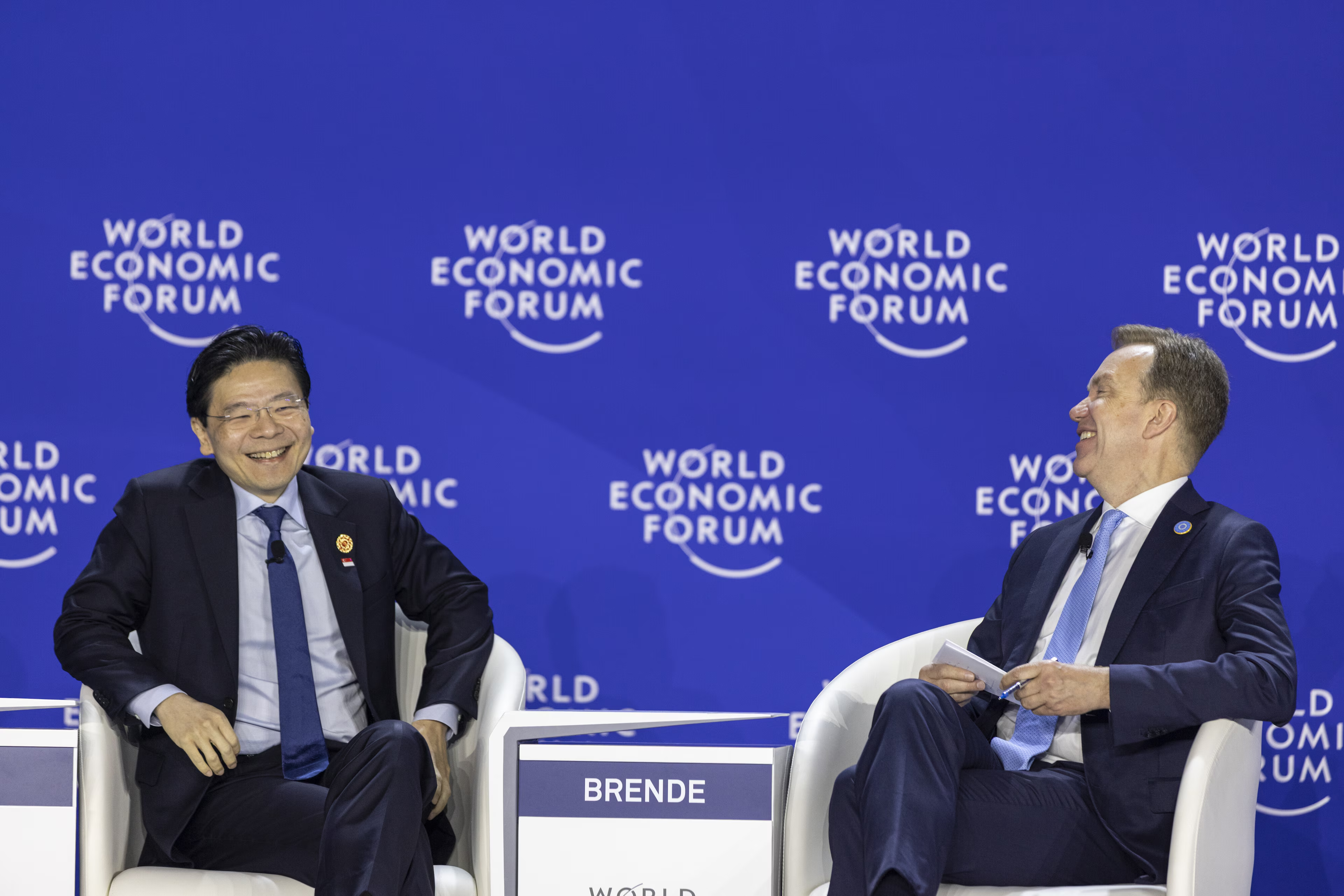In 2025, the US and China engaged in a tit-for-tat trade dispute linked to tensions around merchandise trade.
After negotiations, both sides have agreed to lower recent tariffs and continue trade talks.
The timeline and chart below highlight key moments in the significant trade dispute between the world’s two largest economies.
세계경제포럼, 2025년 6월 25일 게시
Spencer Feingold
Digital Editor, World Economic Forum LLC
Kimberley Botwright
Deputy Head of CRTG, Head of Responsible Trade & Governance, World Economic Forum

In early 2025, the global trade landscape was reshaped as US President Donald Trump, newly returned to the White House, reignited a tariff dispute with China as part of a broader effort to overhaul US trade policy, including through the International Emergency Economic Powers Act (IEEPA).
The timeline below traces the rapid sequence of ensuing policy announcements and retaliatory actions, illustrating how each side’s measures intensified throughout the spring.
The trade dispute began with the US imposing sweeping tariffs on all Chinese imports, citing the need for stronger action against illicit synthetic opioid distribution and broader trade imbalances.
China responded immediately, targeting key American exports such as coal, liquefied natural gas and agricultural equipment, and escalating with additional tariffs on US agricultural products and restrictions on American firms.
As the months progressed, both countries engaged in a series of retaliatory measures, with tariff rates climbing to unprecedented levels.
The escalation marked a period of intense economic uncertainty, with global markets reacting to the threat of a near-embargo on trade between the world’s two largest economies.
The chart below captures changes to the effective tariff rate through the two economies throughout 2025.
Diplomatic efforts eventually brought both sides to the negotiating table in Geneva, where a partial rollback of tariffs was agreed upon.
The dispute soon shifted to non-tariff barriers, with China tightening export controls on critical minerals and the US imposing new restrictions on advanced technology exports and student visas.
A subsequent round of talks in London resulted in an easing of newly imposed measures, while both sides agreed to limited concessions on rare earth exports and educational exchanges.
The episode underscores the far-reaching consequences of trade policy decisions, affecting supply chains, global growth forecasts and diplomatic relations.
“China has hedged itself enough away from export to the US,” Liu Qian, founder and CEO of Wusawa Advisory Inc., said this week at the World Economic Forum’s Annual Meeting of the New Champions in Tianjin, China. “A few years ago Europe overtook the US as the largest export market, and nowadays it is the [Association of Southeast Asian Nations], that’s now the largest export market, and last year it was Latin America and the Caribbean, they are the fastest growing export markets for China.”
As for the rest of the world, Trump’s 90-day pause on reciprocal tariffs comes to an end on 9 July.



